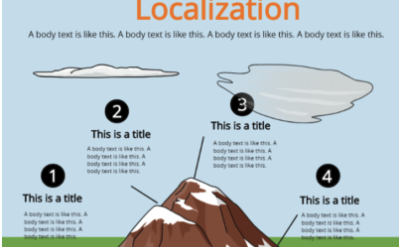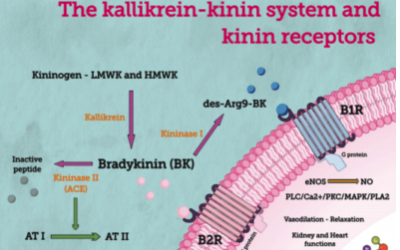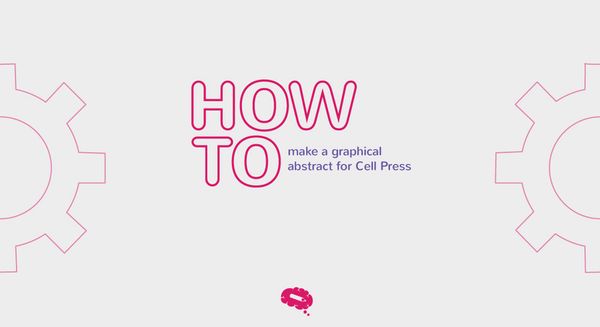Graphical abstracts and Cell Press
If we stop for a second and analyze, graphical abstracts are very recent initiatives, being applied not more than a decade.
We can affirm that the main goal of a graphical abstract is to deliver the main idea of a paper or its main results in just one figure with concise information.
In general, graphical abstracts are the first step in inducing the public to read the full article.
Of course, one single image could never present all the paper complexity due to its limited space. However, having an open mind and a lot of creativity is important in the graphical abstract development process.
Deciding what your graphical abstract will be about, what information will be more attractive to your reader, and how to show this visually are very important steps to accomplish. Furthermore, finding a balance between the amount of information and the best design is also not an easy task.
Nonetheless, we guarantee that the process will become easier with time and practice.
In the article, What’s new in abstracts of science articles1, the author James Hartley discuss that despite graphical abstracts are supposed to provide “a single, concise pictorial and visual summary of the main findings of an article”, a definition that you can find at Elsevier guidelines2 for graphical abstracts, he finds these abstracts often difficult to understand and often is need to appreciate the text beforehand to understand the graphic.
This is the main point! Graphical abstract has to deliver enough information for the reader to understand it and attempt to check the rest of the paper, not the other way around (the reader needed to read the text because doesn’t undestand the graphical abstract).
Suppose the reader needs it to read your text to understand what your paper is about. In that case, your graphical abstract will not be working as, just like Elsevier defines it, “ a figure that is specially designed for the purpose, which captures the content of the article for readers at a single glance.”
You don’t want your graphical abstract to fail on that task, right? Neither do we, that’s why we are here to help you!
We gather 5 tips for you on creating a graphical abstract and what you need to know to get your graphical abstracts successfully accepted by any Cell Press Journal.
Check it out below.
5 tips for creating your graphical abstract
We are going to show you the guidelines to create a graphical abstract for any Cell Journal, but first, you must keep in mind these 5 tips:
- Consult before you start if the journal you are submitting your paper has its guidelines.
Not every journal demands a graphical abstract, but the ones that do always have guidelines for you to follow. Before you start is important to check if the journal has its policies. If you did not do that quick research before starting your graphical abstract, you might lose your creating by being rejected because you did not follow their guidelines. You will have lost time and effort and will have to start all over again. You don’t want that to happen, right? So, take 20min and look for your journal guidelines.
- Start your graphical abstract already with the right dimensions.
Once you check your journal guidelines, start your graphical abstract already in the right size the journal requires. If you start your creation smaller or bigger than you must, you can have problems later by filling blank spaces or filling everything you need. Start already in the right size, and then you won’t need to worry about that later.
- Share information on topics and write the minimum.
In a graphical abstract, you don’t need to share all your results or discussion. Remember, you must catch the reader’s attention and make them curious about your research. In that way, you will be inducing them to browse your full paper or even read it.
- Use visual information and abuse from visual references.
Visual information is the main tool to catch your reader’s attention. That is why using beautiful and accurate scientific figures is so important. You should always use Mind the Graph figures. All illustrations have beautiful designs and are scientifically accurate, and you can use them without any concern.
Like we explained in our article How to Create an Infographic (and any other science figure), looking for visual references is a very important step that you must include in your graphical abstract creating process. In the same way, we search for articles and texts to learn something, and you have to do the same thing for figures. Like everything in life, we need examples, references. Therefore, searching for pictures related to your topic and saving them as reference material for later can be helpful and a game-changer while creating your graphical abstract. Reference material can help you get inspiration and ideas and see ways to organize and present your information.
- Think about the information architecture.
The standard reading is from top to bottom and from left to right, correct? Try to organize your content (text and pictures) in this logic so that your reader does not “get lost” inside your graphical abstract. Usually, journal guidelines require this organization, but not all of them, so check your journal guidelines before you start creating a new line of logical reading. If you choose to create a different reading logic, be very careful and explicit, you can use arrows, lines, balloons, ribbons to help you with that.
Instructions to create a graphical abstract for Cell Press
If you are thinking or already in the process of submitting your manuscript to the journal Cell Metabolism, or any other journal by Cell Press, this article is for you.
We have gathered all information you need to know to create your graphical abstract for Cell Press. For more information, you can always access the Cell Press Graphical Abstract Guidelines3.
And to further expand your knowledge on these guidelines, you can also read our blog post on How to create a graphical abstract for Elsevier, the 2021 edition.
Here is a definition of graphical abstract, according to the Cell Press Graphical Abstract Guidelines:
“…One single‐panel image that is designed to give readers an immediate understanding of the take‐home message of the paper.”
In other words, this means that your graphical abstract must have only one image, not multiple ones, and it must be quickly understood.
Just as Cell Press guidelines explain (and us too), the main goal of graphical abstracts is to encourage the reader to browse the article or even read it.
Graphical abstracts need to help the reader to quickly identify if the paper is relevant to what they are looking for. Plus, graphical abstracts promote interdisciplinary scholarship.
Furthermore, details about image size, font to use, file type, and more are listed below:
- Size: The submitted image should be 1200 pixels square at 300 dpi.
- Font: Arial, 12–16 points.
- Smaller fonts will not be legible online
- Preferred file types: TIFF, PDF, JPG
- Content: the abstract should consist of one single panel
The Content
Your graphical abstract content must be unique and clear. Try to keep it simple, with a clear start and end, with the information organized from top to bottom or left to right. Share with your reader a visual indication of the biological context of your results.
If your article has other figures or diagrams, be careful to create your graphical abstract different from them to distinguish them from the others.
Add your paper finding in the graphical abstract; however, be careful not to exceed the amount of information. You don’t need to add details from previous literature in your graphic abstract or speculative features.
Cell Press guidelines do not accept to add data items of any type in your graphical abstract, and all information should be in a visual form.
Cell Press Graphical Abstract in Mind the Graph Style
To show you how you can use Mind the Graph platform to create any science figure, watch out the YouTube video below.
The video is a timelapse on how you can reproduce a graphical abstract from Cell Press Graphical Abstracts Guidelines3 inside Mind the Graph platform.
Ready to start your graphical abstract?
Click here to start!
References:
- What’s new in abstracts of science articles.
- Elsevier Graphical Abstracts Guidelines.
- Cell Press Graphical Abstract Guidelines.

Subscribe to our newsletter
Exclusive high quality content about effective visual
communication in science.








